If you have carpeted surfaces in your home, it’s likely that you’ve used carpet cleaner to clean them. But what about other materials? Can you use the same cleaning product on anything else, like upholstery?
Carpet cleaners are designed to remove dirt and stains from carpets, so they should work on any material if it’s got a similar texture. And in this article, we will reveal the list of possible materials where you can use your excess carpet cleaner! Keep reading to know more.
CARPET CLEANING
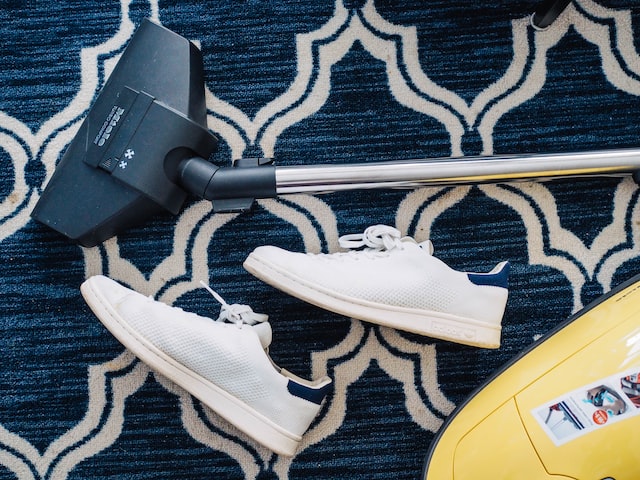
Carpet cleaning is the process of removing dirt, stains, and odors from carpets. This is done by hand or with a machine. Carpets should be cleaned regularly, depending on the amount of traffic they receive and how often you vacuum them. If your carpet receives heavy foot traffic but doesn’t have time to dry between cleanings, you may need to have it professionally cleaned more frequently than once every six months.
One important step in carpet cleaning is to use a carpet cleaner. So what is the power behind this cleaner and it’s specified as “carpet” only? Let’s check on the next section.
WHAT IS A CARPET CLEANER?
A carpet cleaner is a type of cleaning equipment used to clean carpets and upholstery. It uses water and chemicals to clean the carpet.
It’s more effective than dry cleaning because it works with water and detergent which helps remove dirt, grease, stains, and other contaminants from your carpets. It’s safer than dry cleaning as well because there is no risk of exposing yourself to harmful chemicals when using this method on your carpet. Carpet shampooing can be an expensive alternative if you don’t have one already, so it’s advisable using a carpet cleaner instead if you’re looking for an affordable way to keep your carpets clean!
>>Types of carpet cleaner
Depending on the type you choose, you’ll either have to use liquid detergent or steam to clean your carpets. You can also use a dry beater bar for deep suction action, which will also help dislodge dirt from deep within the pile.
- Hot vs Cold Water Extraction
If you want things really clean, consider using hot water extraction, which involves using hot water instead of cold and then forcing it through your carpet with high-powered fans and brushes that pick up everything from dirt stains to allergens like pollen and pet dander. Hot water extraction is best for homes with kids or pets because it removes more allergens than other methods do, but if you don’t have kids or pets at home yet and plan on having them one day, you’ll want to stick with cold water extraction since hot water can stain some carpets over time due to heat damage from the friction created by brushing them out during vacuuming after cleaning has been applied
But the main question is, what if you don’t have a carpet but you have a cleaner, for instance? Do you just throw it away? Before you do that, did you know that you can use it for some other materials? Check the next section to learn how.
THINGS TO CONSIDER BEFORE USING CARPET CLEANER ON OTHER MATERIALS
If you have carpets in your home, chances are you have a bottle of carpet cleaner in the closet. These solutions are great for getting rid of stains and dirt on your carpets, but did you know that they can also be used to clean other materials in your home? In this section, we’ll talk about some things to consider when using carpet cleaners on non-carpet surfaces.
? Check the label
When looking at carpet cleaners, you’ll notice there are two main types: non-ionic and anionic. Anionic cleaners perform better than non-ionic ones, but they can be harsher on your skin and the environment. If you’re using a non-ionic cleaner, make sure it says “safe for use on carpets”, or other materials you intend it to use for.
? Test a hidden area
Before using a carpet cleaner on other materials, you should test a hidden area. If you can’t do this, use a water-soluble dye to mark the spot and check for color fastness after letting it dry. If it is not possible to test a hidden area, test on an inconspicuous part of the material.
? Do not over-wet
While a spot-cleaning carpet cleaner may be ideal for many fabrics, it’s important to make sure you don’t overwet the item or leave it wet for too long. The longer an item is soaked in water, the more likely it is that you will have to deal with permanent damage (and your dry cleaner will charge you extra).
When using a spot-cleaning solution on other materials, wet only what needs to be cleaned. This can help prevent excessive soaking and avoid unnecessary damage. Don’t also soak items that shouldn’t be submerged in water (such as woolen rugs), as doing so may ruin them permanently.
? Use the right amount
You can use the same amount of carpet cleaner on any material, but it may take more or less time to clean depending on how dirty or stained the item is. If you have a large area to clean, consider using a commercial-sized bottle and diluting your carpet cleaner before using it.
If you’re dealing with a stain on fabric, use more carpet cleaner than you think you need. Even though this sounds counterproductive, if there’s too little cleaning solution in contact with the affected area for too long, dirt will remain behind once rinsed out. On the flip side, if there’s too much cleaning solution present at once (like if it spills over), some of that excess liquid won’t be able to be rinsed out because its molecules are already saturated with dirt and other grime from your flooring surface!
OTHER USES OF CARPET CLEANER
A carpet cleaner is one of the handiest tools you can have in your home. It’s an affordable way to keep your carpets in great shape, plus it helps to protect them from spills and stains. But what if you don’t have any carpet? Or what if you need to clean something that isn’t made of fabric? Luckily, there are tons of other things that can benefit from a little steam-cleaning action, and some might surprise you!
? Furniture
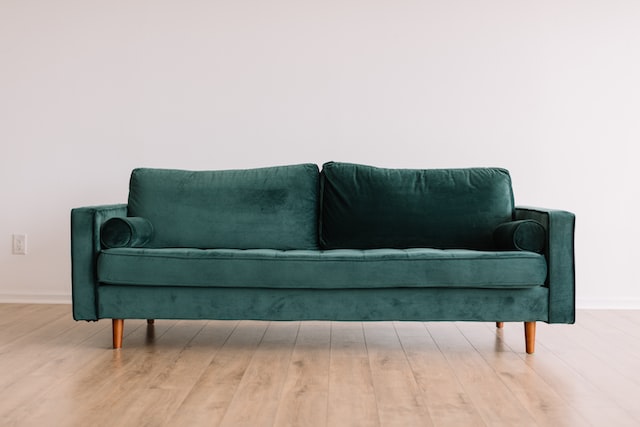
You can also use your carpet cleaner to clean furniture. Be sure to use a gentle cleaning solution for furniture made from vinyl and fabric. You can use a soft bristle brush to clean the fabric and vacuum it afterward.
For leather furniture, use a cleaner that is not abrasive and does not contain oils or waxes in order to preserve the integrity of the material.
? Tile and grout
Tile and grout are a whole other beast. It’s important to use cleaners that are safe for tile and grout, as these materials can be easily damaged by harsh chemicals or high moisture levels.
A low-moisture content and a non-acidic carpet cleaner are the ways to go here. In addition, it’s also important to make sure your cleaning product is made for tile flooring because some carpet cleaners might not be great for this type of surface! Once you have your product picked out and ready to go, you’ll need a scrub brush (if the area is small) or a flat mop (if the area is large).
Once you have scrubbed up all of that dirt with your cleaning solution and mop combo (or vacuum if you don’t want to get wet), wipe down your surface with clean water and then dry it off with towels or paper towels until it’s completely dry before walking on again!
? Auto interiors
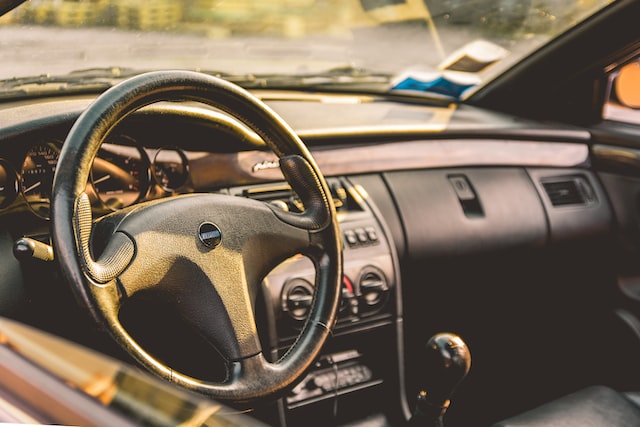
The general rule of thumb is that auto interiors are pretty low-maintenance, so you can use a carpet cleaner on them without worrying about damaging anything. For example, if you spill coffee or soda on your car’s interior, just get some paper towels and clean it off with soap and water (or take it to a professional detailer). If you have more serious stains like oil or mud splatters, try using an all-purpose cleaner first before resorting to the carpet cleaner.
Once you’ve done that, get yourself a damp mop head with microfiber cloths attached and squeeze out any excess water from the microfiber cloths before starting your cleaning session. Use those same cloths for scrubbing any stubborn stains until they’re completely gone!
? Stairs and railings
You can also use a carpet cleaner to clean your stairs and railings. This is really helpful if you want to make sure that your carpet looks good, but don’t want to move it around. It’s also great for cleaning rugs without getting them wet or messing with a vacuum.
If you’ve got an auto interior that needs some sprucing up, this little guy will do their best work there as well. It’s even great at cleaning area rugs because it doesn’t require any water at all, just spray away!
? Area rugs
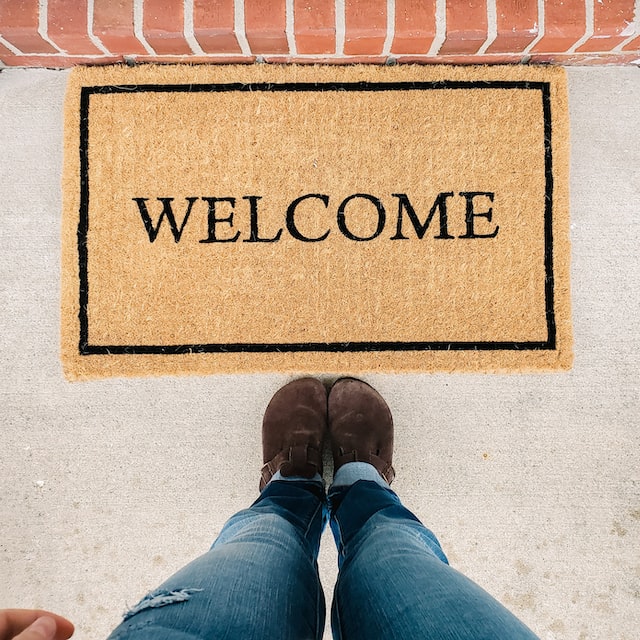
As mentioned, carpet cleaners are also great for area rugs. You should clean your area rug on a regular basis, which will probably be around every 3 to 6 months. For other types of rugs, it can be done more often (for example, after spills and heavy use). If it’s been exposed to smoke or other pollutants, it should be cleaned as soon as possible afterward.
If you’re concerned about the health of your family members and pets, using a carpet cleaner is an inexpensive way to ensure that there are no dangerous bacteria on the surface of your carpeting. It’s also vital if you want to protect their lungs from dust mites and allergens in the air they breathe while they play on the floor!
CAN CARPET CLEANER BE USED ON UPHOLSTERY?
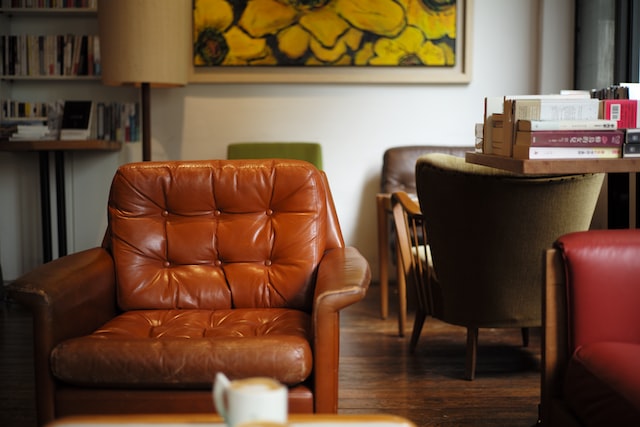
Yes, carpet cleaners can be used on upholstery. However, it is important to note that the product should be tested in an inconspicuous area first to ensure that there are no adverse reactions to the fabric. If there are no problems with the test, you can proceed to clean the rest of your upholstery with confidence.
Carpet cleaners contain corrosive chemicals that are used to remove stains from carpets and other fabrics. The most common chemical used in carpet cleaners is sodium hypochlorite, which is known as bleach. Bleach can be harmful if it comes in contact with skin, but it does not damage the fibers of your upholstery or any other type of fabric.
You should always follow the instructions on the bottle of your carpet cleaner when you use it on your upholstery. Remember: if you doubt, discard!
HOW TO CLEAN UPHOLSTERY WITH A CARPET CLEANER?
Upholstery is a wonderful feature of your home. It’s stylish, and durable and can help make your living room more comfortable. The only problem is that it’s not always easy to clean. Upholstery needs special attention for the best results, but with the right tools and techniques, you can keep it looking good for years to come!
Step 1: Pre-vacuum the upholstery you want to clean
Before you start cleaning the upholstery, it’s important to vacuum it thoroughly so that you remove all the dirt and dust from the upholstery. You can use a crevice tool to get between the cushions, and if you don’t have one of those handy, just lift up each cushion carefully as you vacuum. If there are any spots that are especially dirty, use a brush attachment on your vacuum cleaner to clean them off.
Step 2: Mix an appropriate upholstery cleaning solution
You can use a carpet cleaner to clean your upholstery, but you’ll want to make sure that the product is appropriate for the type of stain. For example, if you’re dealing with pet stains, you’ll want to use an enzyme-based cleaner that will break down proteins and break down stains.
If you’re using a carpet cleaner as opposed to a detergent-based household cleaner, be sure to check the label on the product before using it on your furniture. Some products contain harmful chemicals which are not safe for children or adults for that matter!
Step 3: Test the stain-cleaning solution
You can test out your stain-removing solution on a hidden part of the couch, like behind the cushions or underneath an armrest. This way you’ll know if it’s safe to use on your upholstery before using it on a visible area. If you don’t want to take any chances with this method, try testing a small patch of fabric with a cotton swab dipped in the stain removal solution, then check for color transfer after 24 hours.
Step 4: Clean furniture upholstery carefully with the cleaner
Soak upholstery in the carpet cleaner, but don’t saturate the upholstery. You want to put just enough of the carpet cleaner on your furniture’s upholstery so that it gets wet but not so much that it drips off onto things like the floor or table below it when you apply pressure.
Don’t also let it sit on your furniture for long periods of time. Just as you wouldn’t want to leave a cup of water sitting on a table for hours, you also don’t want to let this particular cup run over with its contents either! Keep an eye out for areas that are starting to dry out, and gently blot them with a cloth until they’re damp again. But don’t soak through with more liquid than necessary!
Step 5: Blot out excess water
After you have blotted out the excess water, you should then move on to blotting out any remaining moisture with a dry towel or cloth. Do not rub too hard as this will cause your upholstery cleaner to build up into a film and make it more difficult for you to get clean. Also do not use paper towels since these are extremely abrasive and can damage your upholstery.
Step 6: Gently brush the upholstery
After you have cleaned the upholstery with your cleaning solution, gently brush the fabric to remove any moisture residue. Use a soft brush and allow it to dry. If there is excess moisture, use a dry cloth or towel and blot the area to remove any excess moisture. Avoid rubbing the fabric as this can cause permanent damage. If you cannot get rid of the stain by cleaning with water, then try another solution that includes drying power like rubbing alcohol or vinegar mixed in warm water
Bonus: OTHER METHODS OF CLEANING UPHOLSTERY
Cleaning upholstery is no easy feat. It’s a time-consuming process that’s often messy and never fun. However, if you’ve got some stains to get out, here are some of my favorite methods for cleaning upholstery.
? Vinegar
While vinegar is a great cleaning agent and can be used to remove stains, it is also the perfect way to clean upholstery. The acidity of the vinegar will cut through dirt on all types of surfaces without leaving behind any sticky residue. Vinegar can also be used to clean floors by mixing it with water or lemon juice in a spray bottle.
? Baking soda
To clean upholstery with baking soda, mix it with water to create a paste. Apply the paste to the upholstery and let it sit for several minutes before scrubbing with a brush. Rinse with water when you’re done.
? Dish soap
Dish soap is usually the first thing people think of when it comes to cleaning upholstery. The reason for this is that dish soap does a good job removing oil-based stains, but it’s not particularly effective at removing water-based ones.
To use dish soap effectively, you’ll want to dilute it with warm water before spraying it onto your upholstery and then scrubbing away any stubborn stains with a soft cloth or sponge. It’s best to apply gentle pressure when scrubbing so as not to scratch up your upholstery too much.
? Detergent
Detergent is another great way to clean upholstery. This method works especially well with fabric-covered furniture, which is often more delicate and prone to tearing or staining than leather or vinyl upholstered furniture. Detergent has a high cleaning power, so you only need a little bit: a quarter cup should do the trick!
You can add detergent directly into your washing machine during its normal cycle as long as it’s not a delicate cycle that requires less agitation (like an “air fluff” or “delicates” setting). You may also want to consider using one of our cleaning solutions instead of adding detergent directly since these products have been formulated specifically for cleaning stains and odors from upholstery, which will help keep your fabrics looking better for longer.
? Essential oils
Essential oils are an ideal solution for cleaning upholstery because they’re environmentally friendly and effective. These are extracted from various plants, herbs, and seeds, which makes them a natural alternative to harsh chemicals. They can be used on leather, suede, and other fabrics.
Essential oils also have a pleasant scent that won’t irritate your nose or cause you to sneeze like cleaning products with strong odors might do (especially if you have allergies). The best part about using essential oils? They don’t leave behind any residue or film on your furniture, making them safe for use around children and pets!
? Steam cleaning
Steam cleaning is another method of cleaning upholstery. It uses hot steam to loosen dirt and grime while sanitizing the fabric. You can purchase a steam cleaner at any hardware store and they are very easy to use.
To start, vacuum the upholstery first, then fill the reservoir with water, add in some cleaning solution (available at pet stores), plug it in, and turn it on! The machine will emit hot steam which will penetrate deep into all of those crevices that you could never get at with a rag or vacuum cleaner alone. Be sure to test this method on an inconspicuous area before moving onto the whole piece of furniture so that you know how well it works for your specific fabric type and color!
? Hand wash
To begin, you’ll need to get a soft cloth and use it to clean the furniture. You can also use a mild detergent if you choose, but this is not necessary. The goal is to remove dirt and stains from your upholstery while keeping it safe from the harsh chemicals that are used in most cleaning products.
Once you’ve cleaned your upholstery, rinse it thoroughly with cold water on a gentle cycle and dry off any excess moisture with a towel before putting it back into place. Make sure not to leave wet objects out for long periods of time. This can cause mold growth under your cushions or damage them otherwise! When done drying them off with towels, allow them to air dry completely so they’re ready for use again soon after cleaning has been completed successfully!
Final Words
In the end, it all boils down to your personal preference. Some people may prefer to use only chemicals, while others get their carpets cleaned by a professional who uses only water. It’s up to you!
The key is to experiment with whatever works best for you and your family. If a certain type of cleaner has been used for generations in your family and everyone is happy with the results, then there’s no reason not to continue using it! Take some time today (or tomorrow if today isn’t working out) and test out some different methods on an old upholstery piece or two (you might be surprised at how easy it really is.)!
If you want to clean something other than the carpet with your carpet cleaner, make sure that you check the label for instructions on how it should be used. You don’t want to risk damaging your home’s fabrics or wood floors by using something that wasn’t intended for them. Also, keep in mind that some products are meant only for carpets, while others can work on both surfaces!
If you want to clean the sofa without using a vacuum cleaner, click here!

